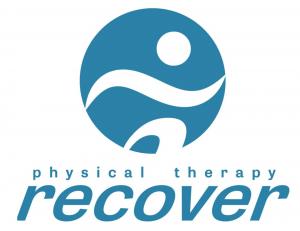The Benefits of Physical Therapy for Chronic Pain Management
Physical therapy offers a comprehensive approach to pain management that focuses on restoring movement and function, which are often compromised in individuals with chronic pain”
SLIDELL, LOUISIANA, UNITED STATES, July 26, 2024 /EINPresswire.com/ -- Chronic pain is a persistent and often debilitating condition that affects millions of people worldwide. It can stem from various causes, including injuries, medical conditions, or surgeries. Managing chronic pain effectively is crucial for improving quality of life, and physical therapy has emerged as a highly effective approach in this regard. Chaise Bennett2, owner of Recover Physical Therapy1 in Slidell, Louisiana, highlights the benefits of physical therapy in managing chronic pain and improving overall well-being.— Chaise Bennett
Chronic pain can manifest in different forms, such as back pain, neck pain, arthritis, or fibromyalgia. Unlike acute pain, which serves as a warning signal of injury or illness, chronic pain persists beyond the expected period of healing and can last for months or even years. This prolonged pain can lead to physical and psychological challenges, including reduced mobility, decreased function, and emotional distress.
Physical therapy plays a vital role in chronic pain management by addressing the underlying causes of pain and helping patients regain strength, flexibility, and function. Chaise Bennett emphasizes that a tailored physical therapy program can significantly alleviate pain and improve the quality of life for individuals dealing with chronic pain. "Physical therapy offers a comprehensive approach to pain management that focuses on restoring movement and function, which are often compromised in individuals with chronic pain," Bennett explains.
One of the primary benefits of physical therapy is its ability to reduce pain through various therapeutic techniques. These may include manual therapy, exercise therapy, and modalities such as heat, cold, or electrical stimulation. Manual therapy involves hands-on techniques, such as joint mobilization and soft tissue manipulation, which can help alleviate pain, reduce inflammation, and improve mobility. Exercise therapy, tailored to the individual's specific condition and needs, strengthens muscles, enhances flexibility, and promotes overall physical fitness.
Another crucial aspect of physical therapy is education. Patients are educated about their condition, the factors contributing to their pain, and strategies for managing it effectively. This knowledge empowers patients to take an active role in their recovery and make informed decisions about their care. Education also includes guidance on proper posture, body mechanics, and ergonomics, which can prevent pain exacerbation and promote long-term well-being.
Physical therapy also addresses the psychological aspects of chronic pain. Chronic pain often leads to emotional challenges, such as anxiety, depression, and frustration. These psychological factors can further intensify the perception of pain and create a cycle of suffering. Physical therapists work with patients to develop coping strategies and relaxation techniques, such as deep breathing exercises and mindfulness, to help manage the emotional impact of chronic pain.
A personalized physical therapy program can also improve functional abilities, enabling individuals to perform daily activities with greater ease and comfort. This is particularly important for those whose pain has limited their ability to work, participate in hobbies, or engage in social activities. Restoring function not only improves physical health but also enhances overall quality of life by allowing individuals to engage more fully in their daily lives.
For individuals with chronic pain resulting from conditions like arthritis, fibromyalgia, or post-surgical recovery, physical therapy offers a non-invasive and drug-free alternative to pain management. This is especially significant given the growing concerns about opioid use and the risks associated with long-term medication use. Physical therapy provides a safe and effective way to manage pain without the potential side effects of medication.
In addition to treating existing pain, physical therapy can also play a preventive role. By improving strength, flexibility, and overall fitness, physical therapy can help prevent the recurrence of pain and reduce the risk of future injuries. This preventive aspect is particularly valuable for individuals who are at risk of developing chronic pain due to lifestyle factors, such as sedentary behavior or poor posture.
Chaise Bennett underscores the importance of a holistic approach to chronic pain management, which includes addressing both the physical and psychological aspects of pain. "Chronic pain is a complex condition that requires a multifaceted approach to treatment. Physical therapy provides a comprehensive solution that addresses the root causes of pain and empowers individuals to take control of their health and well-being," Bennett states.
In conclusion, physical therapy offers numerous benefits for individuals suffering from chronic pain. Through a combination of therapeutic techniques, patient education, and personalized care, physical therapy can effectively reduce pain, improve function, and enhance quality of life. As a safe and non-invasive treatment option, physical therapy plays a crucial role in the comprehensive management of chronic pain, providing patients with the tools they need to lead healthier, more active lives.
Morgan Thomas
Rhino Digital, LLC
+1 504-875-5036
email us here
Visit us on social media:
Facebook
1 https://recoverphysicaltherapy.com/
2 https://recoverphysicaltherapy.com/


